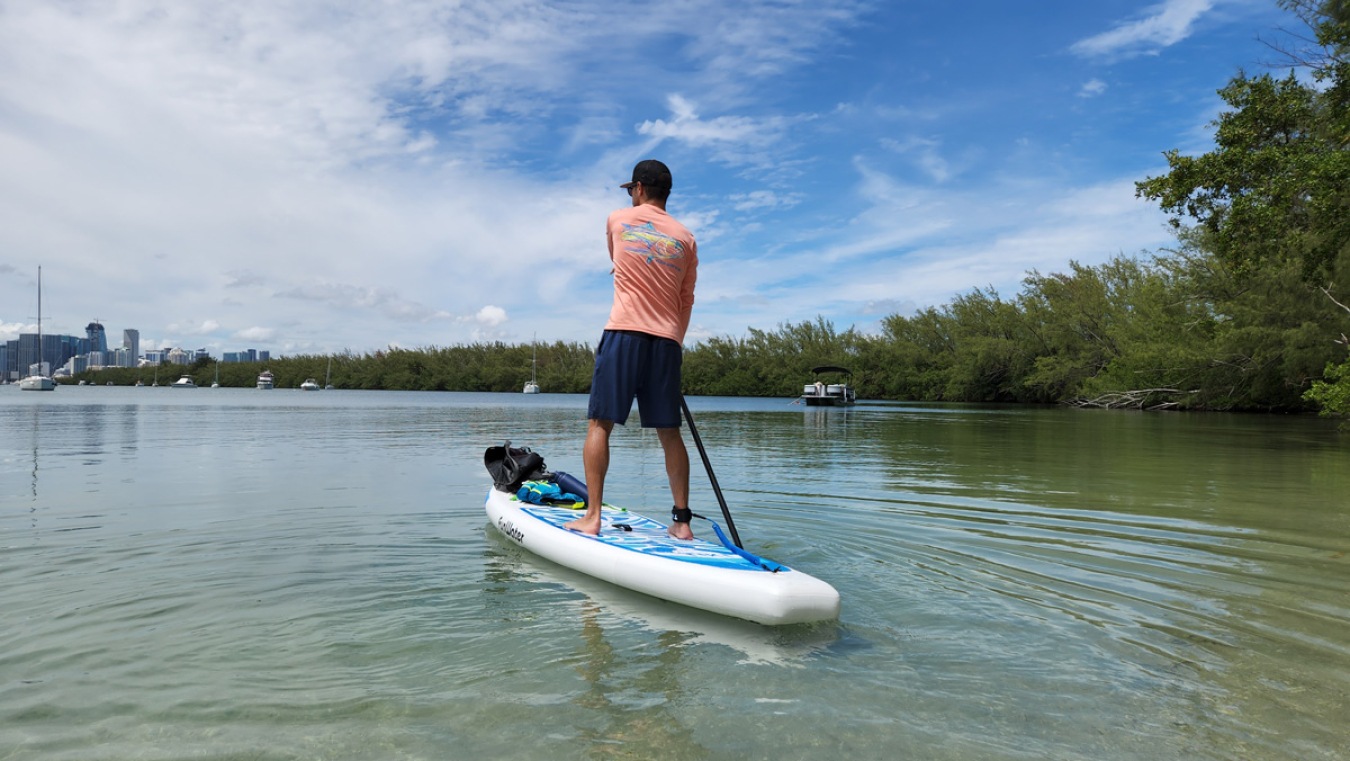Mike Vehar joined the Office of Indian Energy as an engineer in March 2023. He serves as a technical expert supporting technical assistance and administering financial assistance awards.
Office of Indian Energy Policy and Programs
July 24, 2023Mike Vehar joined the U.S. Department of Energy (DOE) Office of Indian Energy as an engineer in March 2023. Duty-stationed in Miami, Florida, he serves as a technical expert supporting technical assistance and administering financial assistance awards to American Indian nations, Alaska Native villages, and tribal and intertribal organizations.

Tell us a little about your role with the Office of Indian Energy.
I have the honor and privilege of working with tribes on their energy efficiency and renewable energy projects across the country. I support recipients of financial assistance through the DOE Office of Indian Energy with navigating the federal regulations, systems, and technical challenges to help make their projects successful.
What do you find most inspiring or motivating about your work?
I take tremendous pride in my job and the work of the DOE Office of Indian Energy. I am constantly inspired and motivated by the communities we work with and their drive to work toward a more sustainable future. There are so many American Indian nations, Alaska Native villages, and tribal and intertribal organizations that are leading the way by example with respect to [increasing] their energy resilience and developing clean energy portfolios. Every piece and project counts. If we as a nation and global community can all move forward together in promoting clean energy solutions, we can create a more sustainable planet for future generations.
What do you see as the greatest challenges and opportunities in tribal energy development?
Our Office supports tribes located all over the nation in all types of climates and geographies. Many of these locations are remote, especially in Alaska and the Southwest, making basic amenities like reliable water and electricity a constant challenge. There are communities that still do not have access to electricity or broadband. The wide variety of challenges faced by these communities force our energy and infrastructure solutions to be specific to the region’s climate and resources.
This challenge presents an opportunity for each tribe to take on the issue of energy resilience utilizing a variety of technologies in their own, unique way. I am reminded of this every year when the DOE Office of Indian energy holds our Program Review. Each team presents on their project, and every project is different. Every team contributes new information and lessons learned to the group. By the end of the week, everyone has gained valuable knowledge from one another and leaves with a new perspective on how to tackle challenges or obstacles back at home.
How do you think DOE support and funding is impacting tribal energy development?
In 2011, I had the opportunity to work for the tribal Energy Efficiency and Conservation Block Grant (EECBG) program funded during the American Recovery and Reinvestment Act (ARRA). A total of $53.22 million was invested in 422 EECBG grant agreements, representing 538 of the 574 allocations to eligible Indian tribes. These formula grants were somewhat small, and many of the communities used their funding to help create an energy office or generate a strategic energy plan. While this work didn’t always provide immediate results, it helped tribes take their first steps toward strategic planning with respect to their energy portfolios.
Ten years later I returned to the DOE Office of Indian Energy and saw how far these tribes have come. Tribes that we worked with on energy plans are now submitting applications for solar carports, energy efficiency upgrades to tribal buildings, wind turbines, and microgrids. Tribes are also utilizing our Office’s Technical Assistance service to gain a better understanding of energy opportunities on their lands. In this way, I have seen many examples of how far technical support and financial assistance can go in tribal communities, and I look forward to seeing what the future holds.
Tell us about one of your favorite tribal energy projects you’ve worked on and why.
I am new to the team, but I am very excited about the focus our Office has put on electrifying tribal homes and buildings as well as pushing energy resilience in tribal communities.
Previously in my career, I spent a lot of time working with rural communities in Central and South America. The majority of these projects focused on efficient wood burning stoves with chimneys that removed smoke from the home and solar lighting solutions in areas where there was no electricity. These projects were always specific to the needs of the community and focused on a sustainable approach to the solution.
At the Office of Indian Energy, our funding opportunities allow tribes to design projects to solve issues and target areas of vulnerability within their communities and microgrids. I find the work we are doing in remote areas in Alaska and the Southwest to be extremely rewarding because it takes on challenges that can have a major impact on the tribal members living in those communities. Everyone deserves basic amenities like shelter, clean water, electricity, and access to medical care. Each project funded by our Office that improves access to electricity or increases the resilience of the local grid can go a long way toward improving the quality of life for these communities.
What do you think the future of energy looks like in Indian Country and Alaska?
I see a future where we all as a global community are working together to reduce our dependance on fossil fuels and move toward clean energy. If we can all follow the lead of the tribes that I have the good fortune to be working with, we can make secure a more sustainable world for our grandchildren.
When you’re not at work, what activities or hobbies do you enjoy?
When I’m not at work, I am typically spending time with my family. My hobbies include paddleboarding, beach volleyball, scuba diving, snowboarding, and traveling.


